
Immunizations are keeping the majority of vaccinated people out of the hospital
https://www.sciencenews.org/article/covid-coronavirus-vaccines-hospital-cases-rates-unvaccinated
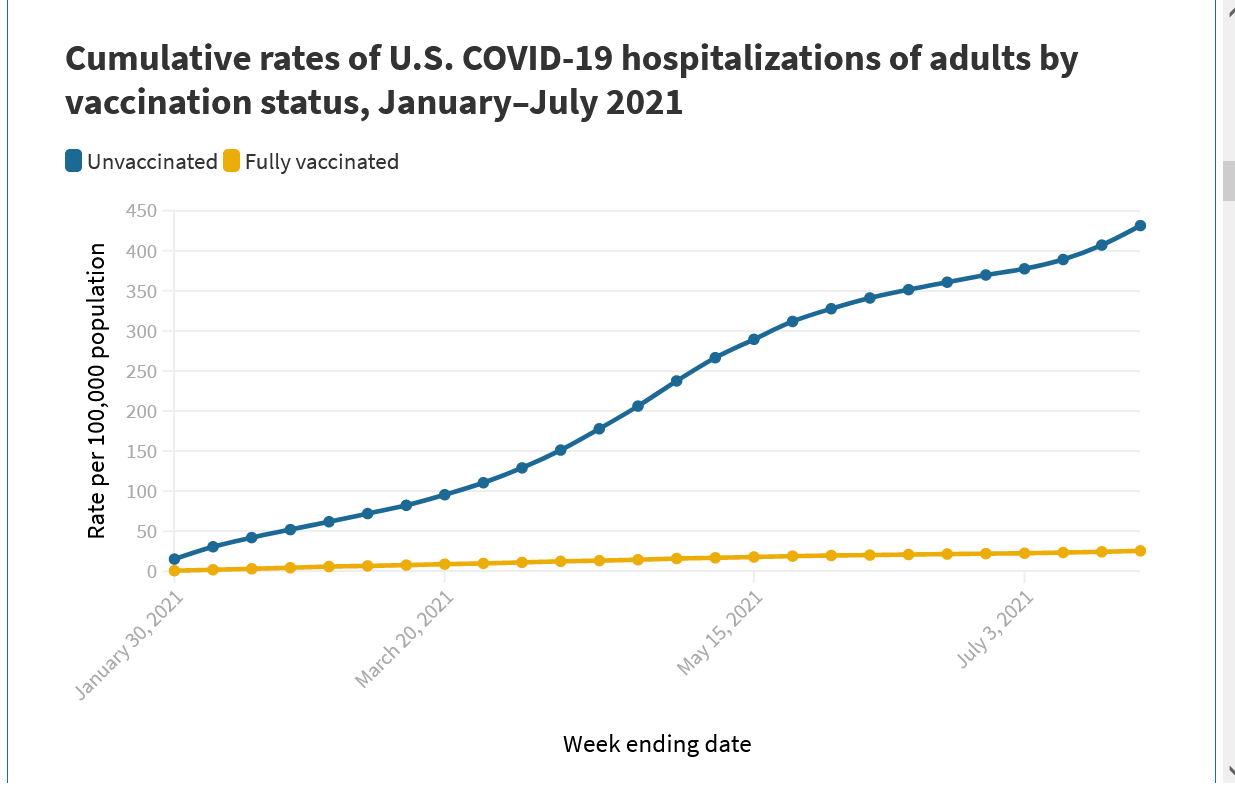
I was studying sunshine hours related to solar power yesterday for fun and ran across some interesting links.
An interesting one is solar panels being used in Alaska!
I'll start with that one:
Building toward the ultimate, net-zero-energy, passive solar Alaska home
EEM-01255
A Solar Design Manual
for Alaska
https://acep.uaf.edu/media/260463/EEM-01255_SolarDesignManual_5thEd201805.pdf
The data below shows a system installed in Anchorage in March. It generated a peak of 587 kWhours in May(which must have been pretty sunny), then just 10 kWhours in December.
The amount of energy that you get from the December sun, is rinky dink based on the physics and meteorology.
The length of day is between 5 hours 30 minutes and 7 hours long in December and the highest angle of the sun is very low in the sky even at its mid-day peak(90 degrees is optimal) and its cloudy most of the time anyway in December.
In the Summer, I could see it being well worthwhile, especially with the extremely long days! Almost 19 hours long on the solstice.
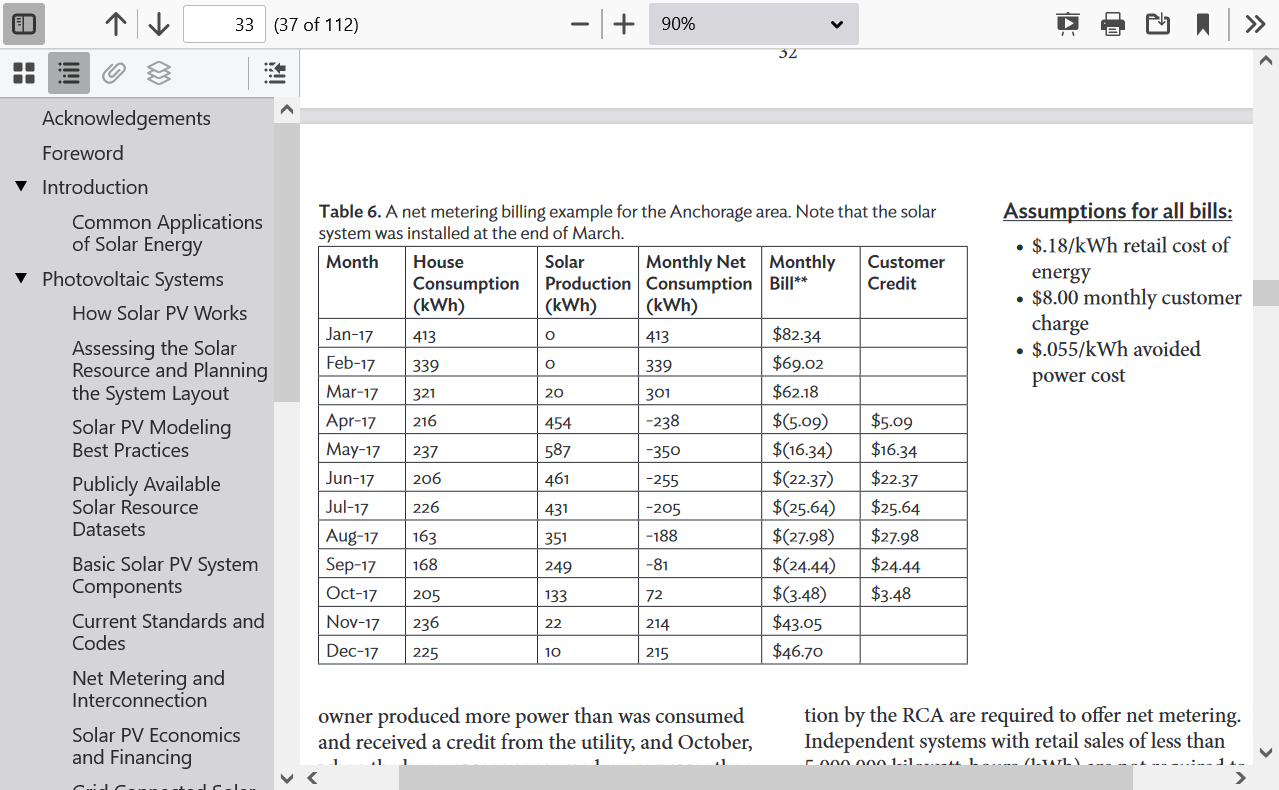
This is the sun's angle/location at Fairbanks, which is over 300 miles farther north.
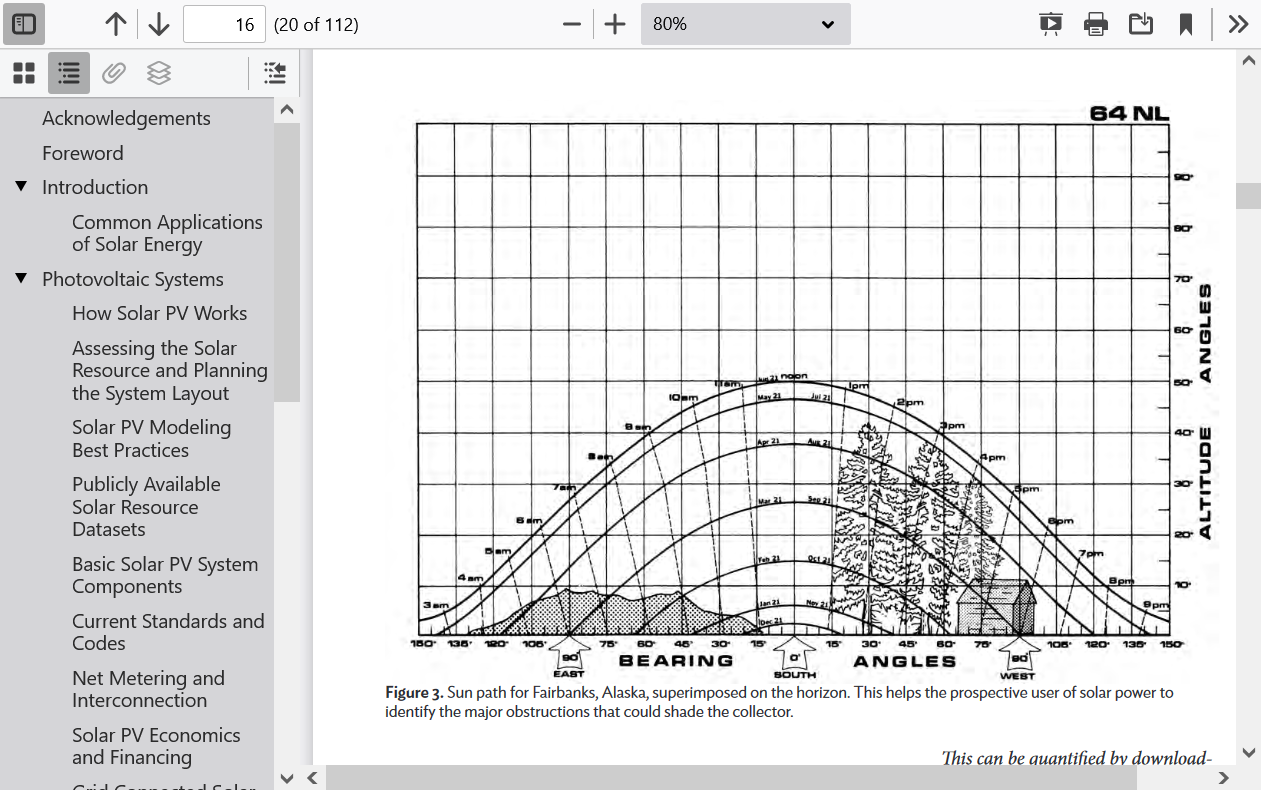
Here's a nice graph for San Francisco, at 38 degrees North latitude. Anchorage, on the previous page is 61 degrees North.
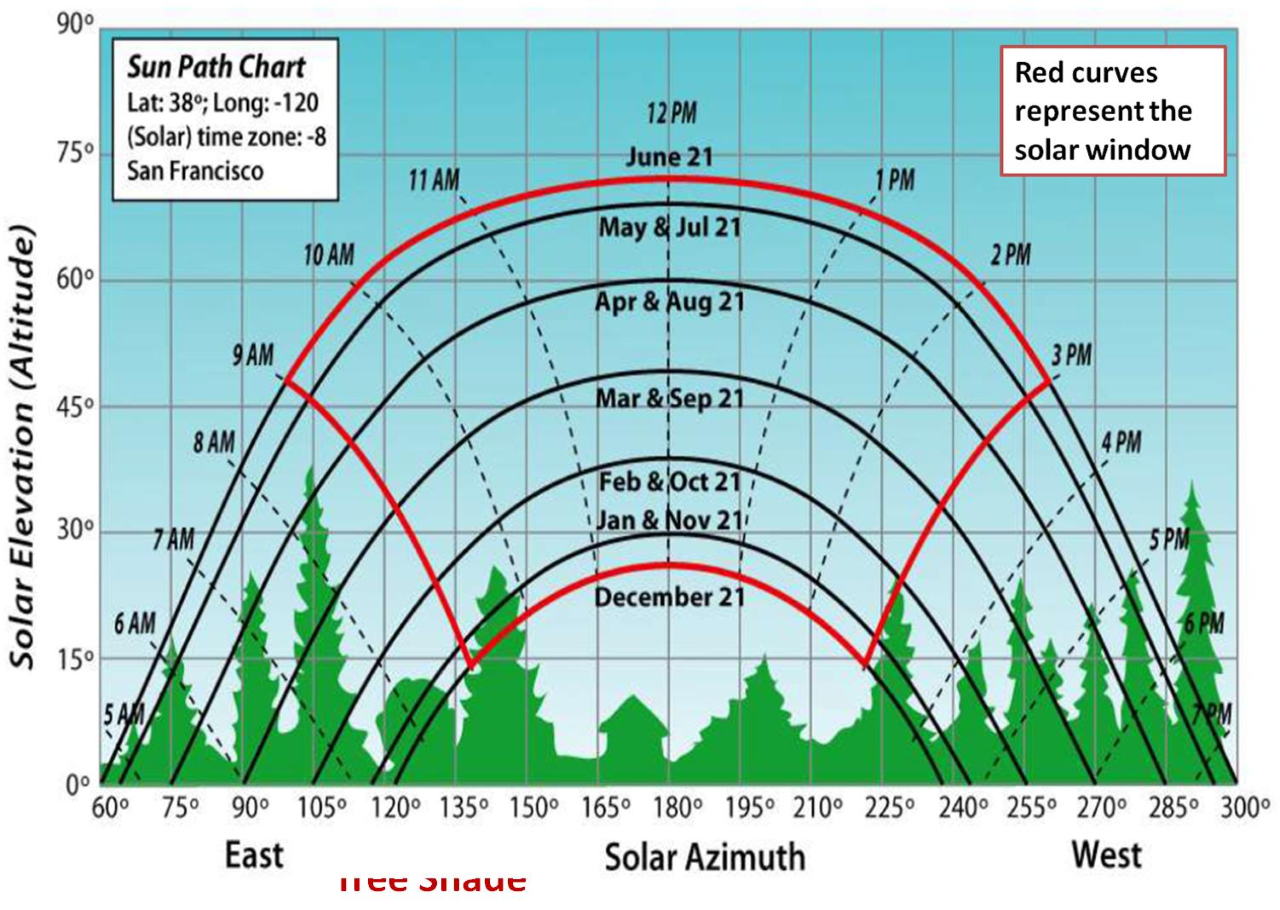
Some Further Observations on Photovoltaic Panels
http://www2.csudh.edu/oliver/smt310-handouts/solarpan2/solarpan2.htm
"The decision to install photovoltaic panels hinges on where one lives. The amount of sunlight as determined by the climate of one's location and the ability to receive the direct rays of the sun when it is shining helps one to decide if it makes sense to install the panels. On the left and right are images showing available sunlight for the continental United States. The one on the right gives the zones in units of kilowatt hours per square meter per day. Although my home location in Lakewood, California would appear to be ideal because of the available sunlight per year, in actual fact our distance from the Pacific Ocean is only 12 km and coastal fog is a problem part of the year. On the average, the amount of sunlight we get is limited to between 5 and 8 hours per day throughout the year (see the blue strip along the coast in the left image in front of the arrow tip)."
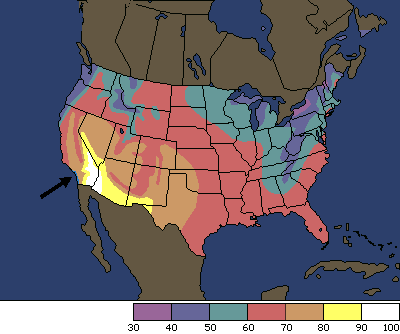
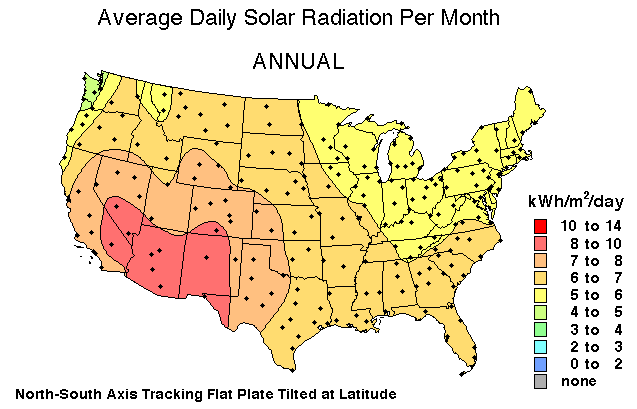
https://en.wikipedia.org/wiki/List_of_cities_by_sunshine_duration
I did a comparison for my siblings based on the vast amount of data at this link.
You may have noted that Portland- 2,340.9, gets just slightly less sunshine than Detroit-2,435.9.
Anchorage gets crummy sunshine-2,061.2 and its all low angled weak sunshine. Solar panels aren't the best at gathering energy in Alaska(in December, Anchorage gets less than 2 hours/day and the sun is near the horizon......so solar panels are worthless)......dugh but I imagine they still use them for the Spring/Summer months.
Bismark was not on the list and I guessed it would be the highest of any of the places we live at, which it is but not by that much. It's far enough north, so that it's not optimal with the low sun angle.
Compare these numbers to Arizona, the best state for solar.
Yuma gets over 4,000 hours of sunshine/year, the most of any place in the US and, as it turns out, is the sunniest place on planet earth!!! That's one of the things you get when you live in a desert(the weather that caused it to be a desert)
Not listed but I looked up were:
Bismark ND gets 2,740 hours of sunshine.
Here in Evansville, the site below states we get 3,048 hours of sunshine/year...........I'm betting that's overstated.
https://en.climate-data.org/north-america/united-states-of-america/indiana/evansville-1570/
One of my brothers live in Prague.
On the 2nd link below with % sunshine for many of the worlds cities, note that Prague-1,668 is not the best place for solar. It has much less % sun than Detroit-2,435.9
and even less than Seattle-2,169.7 . Ireland-1,453 is a bit worse of course but we know how bad Ireland
A better understanding of the physics of storm formation may lead to more accurate forecasts
https://www.insidescience.org/news/how-powerful-thunderstorms-push-water-high-atmosphere
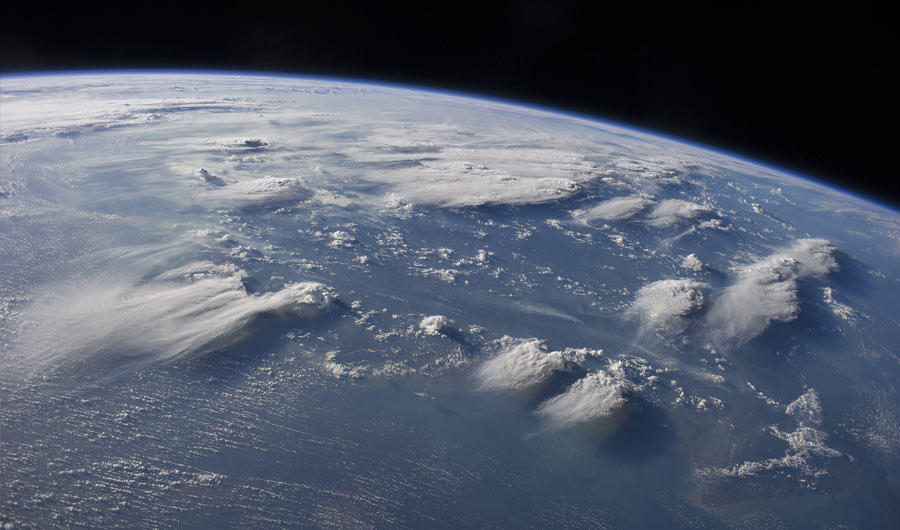
A picture taken from the International Space Stations shows late afternoon sunlight casting long shadows from thunderhead anvils down onto southern Borneo.
Media credits
https://bigthink.com/strange-maps/peak-foliage-map/
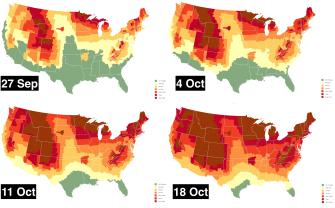
As fall color territory expands, the colors deepen. The South puts up scant resistance. By October 18 this year, only the southern bits of Texas and Florida remain unaffected.